
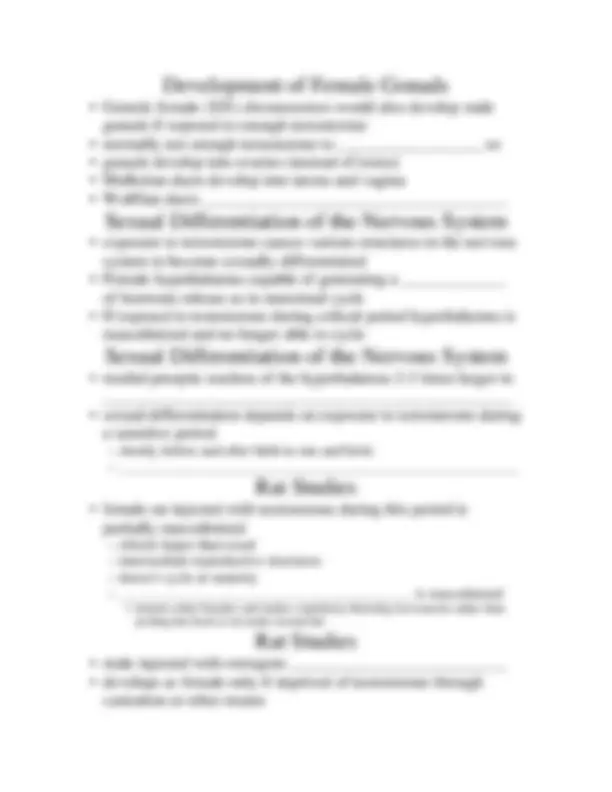
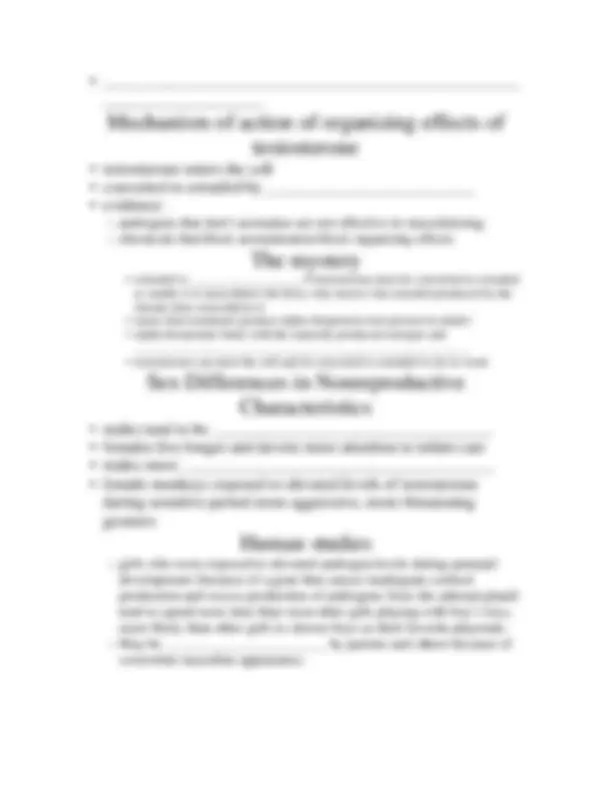
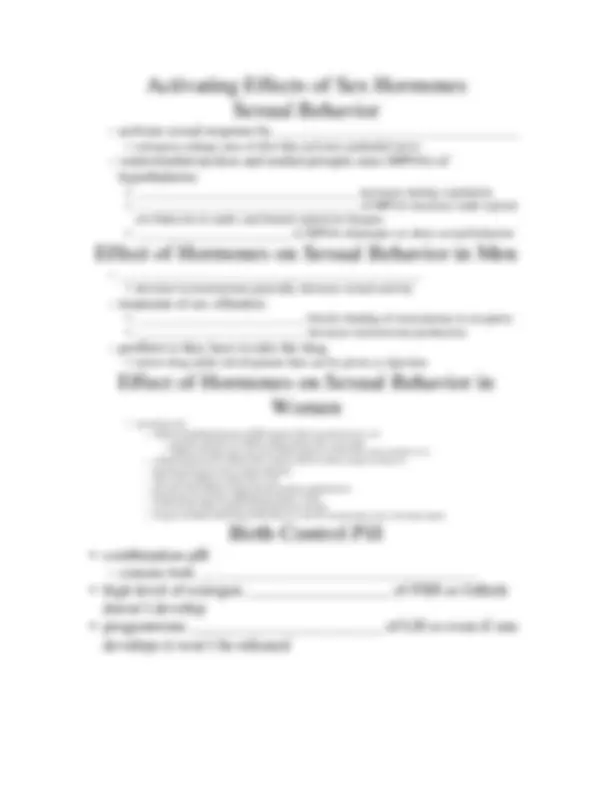
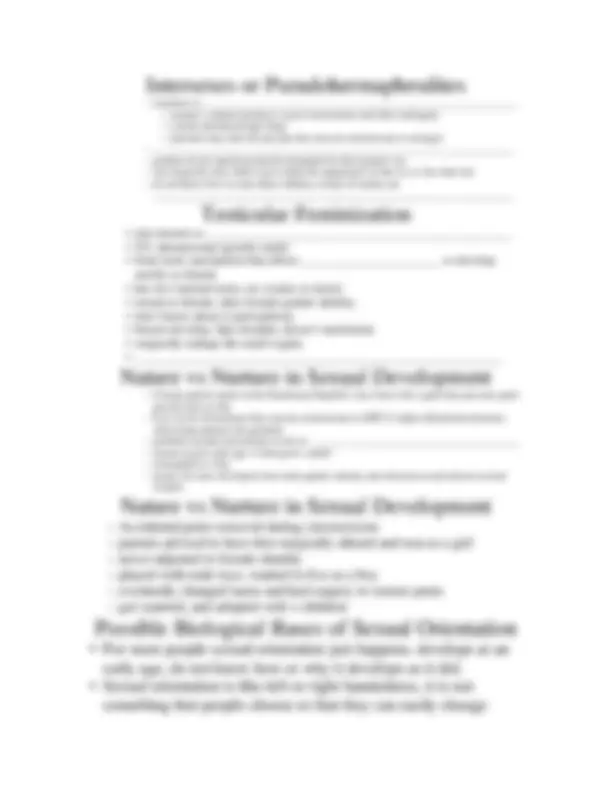
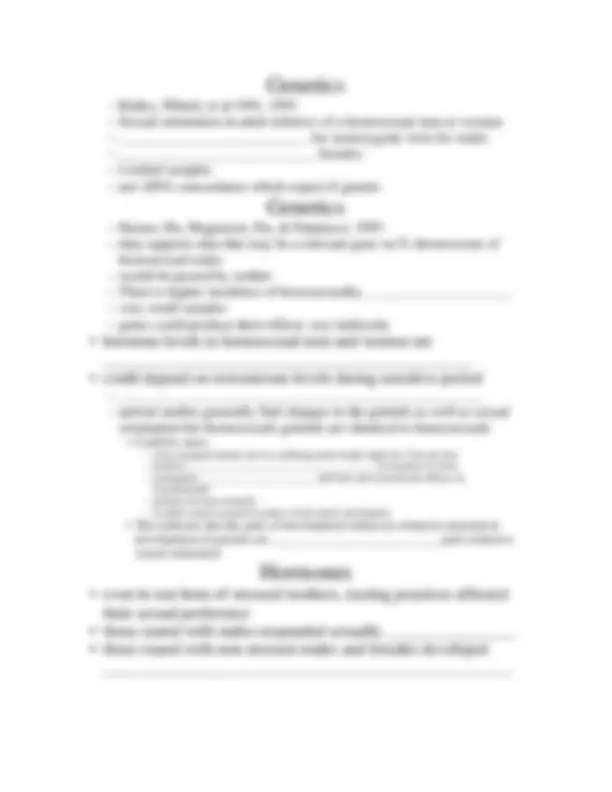
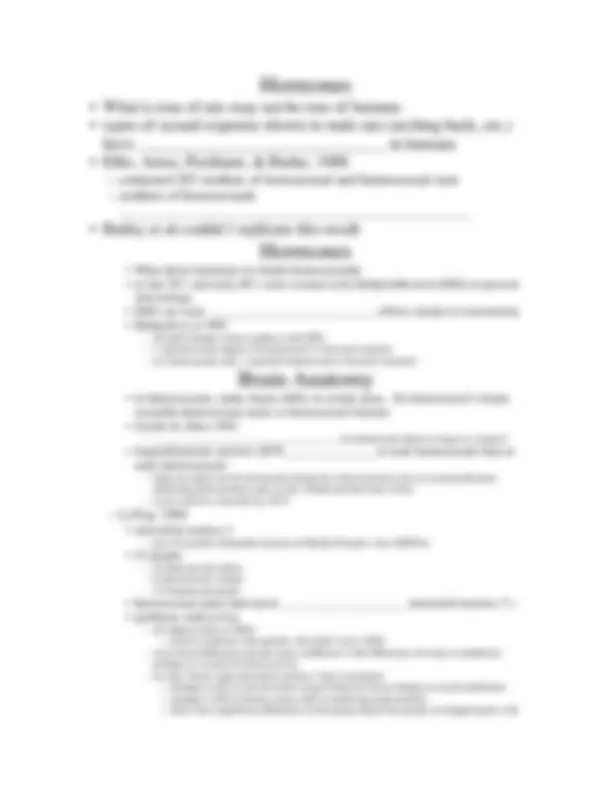


Study with the several resources on Docsity

Earn points by helping other students or get them with a premium plan


Prepare for your exams
Study with the several resources on Docsity

Earn points to download
Earn points by helping other students or get them with a premium plan
Community
Ask the community for help and clear up your study doubts
Discover the best universities in your country according to Docsity users
Free resources
Download our free guides on studying techniques, anxiety management strategies, and thesis advice from Docsity tutors
An overview of various types of hormones, their functions, and their role in sexual development and behavior. Topics covered include steroid hormones, peptide hormones, the pituitary gland, sexual differentiation, and sexual behavior in both males and females. Rat studies and human hormonal changes during puberty and menstrual cycles are also discussed.
Typology: Study notes
1 / 10

This page cannot be seen from the preview
Don't miss anything!







Reproductive Behavior
the maternal behaviors if left with the babies for a few days